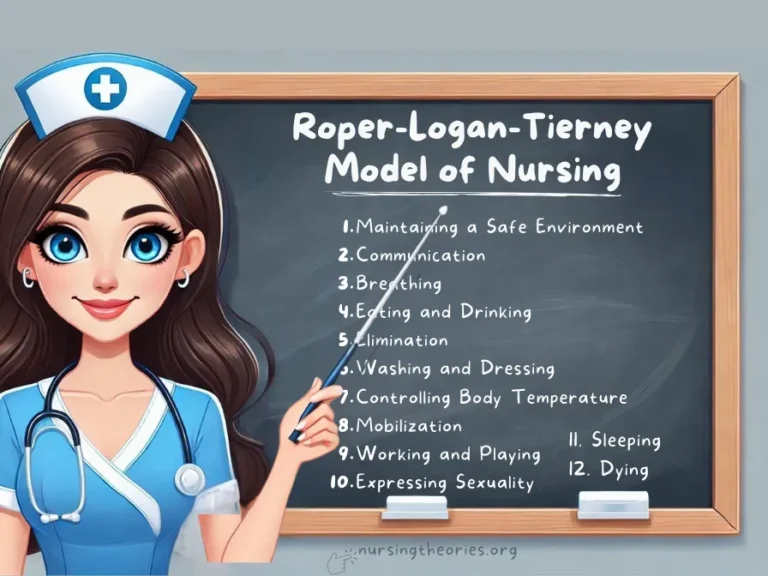The 6 C’s of Nursing form the cornerstone of compassionate and effective nursing practice.
Introduced as part of the UK’s Compassion in Practice strategy by Jane Cummings and Viv Bennett in 2012, these six principles guide how nurses deliver care and interact with patients and colleagues.
They provide a framework for high-quality, patient-centered nursing, ensuring that every action is rooted in empathy, professionalism, and integrity.
The 6 C’s are:
- Care
- Compassion
- Competence
- Communication
- Courage
- Commitment
This article breaks down these principles, illustrating their relevance in nursing practice with practical examples and actionable tips to help you excel in your studies and clinical experiences.
What You’ve Learned
- Care emphasizes respect, dignity, and compassion for every patient.
- Compassion involves empathetic understanding and emotional support.
- Competence requires continuous learning and skill mastery.
- Communication builds trust and ensures accurate information sharing.
- Courage drives advocacy and ethical integrity.
- Commitment reflects dedication to patient care and professional growth.
What Are the 6 C’s of Nursing?
The 6 C’s of Nursing were introduced to promote a culture of care, compassion, and competence in healthcare.
These principles are not merely abstract concepts; they are the foundation of nursing practice that influences patient outcomes, professional development, and workplace culture.
Understanding and applying these principles in clinical settings empowers nursing students to build trust, communicate effectively, and provide holistic care.
The 6 C’s at a Glance
| 6 C’s | What It Means | Real-Life Example |
|---|---|---|
| Care | Providing consistent, quality help | Adjusting a patient’s bed for comfort |
| Compassion | Showing kindness and empathy | Listening to a patient’s fears |
| Competence | Having the skills to do the job | Correctly inserting an IV |
| Communication | Sharing info clearly and kindly | Updating a family on a patient’s progress |
| Courage | Standing up for what’s right | Questioning an unsafe order |
| Commitment | Dedication to patients and growth | Reviewing notes to improve your practice |
Why Do the 6 C’s Matter?
For nursing students, the 6 C’s are more than theoretical ideas—they are practical tools to:
- Build meaningful connections with patients.
- Collaborate effectively with healthcare teams.
- Develop professional integrity and clinical competence.
- Foster resilience and commitment to lifelong learning.
1) Care: The Heart of Nursing
What It Means:
Care is the foundation of nursing.
It goes beyond performing clinical tasks—it’s about recognizing each patient as a unique individual and delivering care that promotes their dignity, safety, and well-being.
Care encompasses both the physical and emotional support nurses provide to patients.
Real-Life Examples:
- Providing Comfort: Adjusting pillows to ease a patient’s discomfort or helping them maintain personal hygiene with dignity.
- Emotional Support: Listening to a patient’s fears and offering reassurance during stressful procedures.
- Patient Advocacy: Ensuring that the patient’s preferences and needs are respected in care planning.
Practical Tips for Nursing Students:
- Practice Empathy: Approach each patient interaction with empathy. Ask yourself, “How would I want to be treated if I were in this situation?”
- Be Present: Small gestures like maintaining eye contact or actively listening can make a significant difference.
- Reflect on Experiences: After each clinical shift, reflect on how you demonstrated care. What went well? What could you improve?
2) Compassion: The Art of Empathy in Action
What It Means:
Compassion is about understanding the emotional experiences of patients and responding with genuine kindness and respect.
It involves seeing beyond symptoms and diagnoses, recognizing the human being behind the illness.
Real-Life Examples:
- Emotional Support: Sitting with a patient who feels anxious or lonely and offering comforting words.
- Empathetic Communication: Using a warm tone, gentle touch, and patient-centered language.
- Respecting Individuality: Acknowledging cultural, religious, and personal values in care decisions.
Practical Tips for Nursing Students:
- Active Listening: Listen to understand, not just to respond. Give patients space to express their concerns and emotions.
- Be Mindful of Non-Verbal Cues: Your body language, facial expressions, and tone of voice can communicate compassion.
- Self-Compassion: Remember to be kind to yourself, especially when facing challenges or making mistakes. Compassion starts with self-awareness and self-care.
3) Competence: Mastering Skills with Confidence
What It Means:
Competence is having the knowledge, skills, and professional judgment to provide safe and effective care.
It requires continuous learning and critical thinking to adapt to evolving clinical situations.
Real-Life Examples:
- Clinical Skills: Safely administering medications, performing wound care, or recognizing early signs of deterioration.
- Critical Thinking: Analyzing patient data to make informed decisions.
- Professional Development: Attending workshops, seeking mentorship, and staying updated with the latest evidence-based practices.
Practical Tips for Nursing Students:
- Embrace Lifelong Learning: Continuously enhance your knowledge by attending seminars, participating in simulations, and engaging in reflective practice.
- Seek Feedback: Constructive feedback from mentors and peers is invaluable for growth.
- Practice, Practice, Practice: Repetition builds confidence. Take advantage of skills labs and clinical practice opportunities.
4) Communication: Building Trust and Collaboration
What It Means:
Communication is the bridge that connects patients, families, and the healthcare team.
It involves clear, compassionate, and respectful dialogue, ensuring that information is accurately shared and understood.
Real-Life Examples:
- Patient Education: Explaining procedures and treatments in simple, relatable terms.
- Team Collaboration: Effectively communicating with the healthcare team during shift handovers.
- Conflict Resolution: Addressing misunderstandings or concerns with a calm and respectful approach.
Practical Tips for Nursing Students:
- Active Listening: Pay attention to both verbal and non-verbal cues.
- Clarity and Simplicity: Avoid medical jargon when speaking with patients and families.
- SBAR Technique: Use the SBAR (Situation, Background, Assessment, Recommendation) framework for concise and structured communication during handovers.
5) Courage: Advocating for What’s Right
What It Means:
Courage is about speaking up for what’s right, challenging poor practices, and taking necessary risks to ensure patient safety and high-quality care.
Real-Life Examples:
- Advocacy: Speaking up for a patient’s preferences or safety concerns, even when it’s uncomfortable.
- Professional Integrity: Reporting unethical practices or errors to maintain trust and accountability.
- Innovation: Embracing change and being open to new approaches for better patient outcomes.
Practical Tips for Nursing Students:
- Trust Your Intuition: If something doesn’t feel right, don’t hesitate to voice your concerns.
- Seek Support: Lean on mentors or peers when navigating challenging situations.
- Stay Informed: Understanding ethical guidelines and patient rights enhances your confidence in advocacy.
6) Commitment: Dedication to Excellence
What It Means:
Commitment is the dedication to providing the best possible care, continuous personal and professional growth, and unwavering support to the nursing profession.
Real-Life Examples:
- Going the Extra Mile: Staying late to comfort a patient or following up on care plans to ensure recovery.
- Professional Development: Engaging in continuous education and skills advancement.
- Team Support: Collaborating and supporting colleagues to create a positive work environment.
Practical Tips for Nursing Students:
- Set Personal Goals: Identify areas for growth and set achievable goals for your learning journey.
- Stay Inspired: Remind yourself of your motivation for choosing nursing—let it fuel your commitment.
- Network and Collaborate: Build connections with mentors, peers, and professional organizations.
conclusion
The 6 C’s of Nursing are more than guidelines—they are the essence of what it means to be a nurse.
By embodying these principles, nursing students can develop into compassionate, competent, and confident professionals who make a meaningful impact in healthcare.




